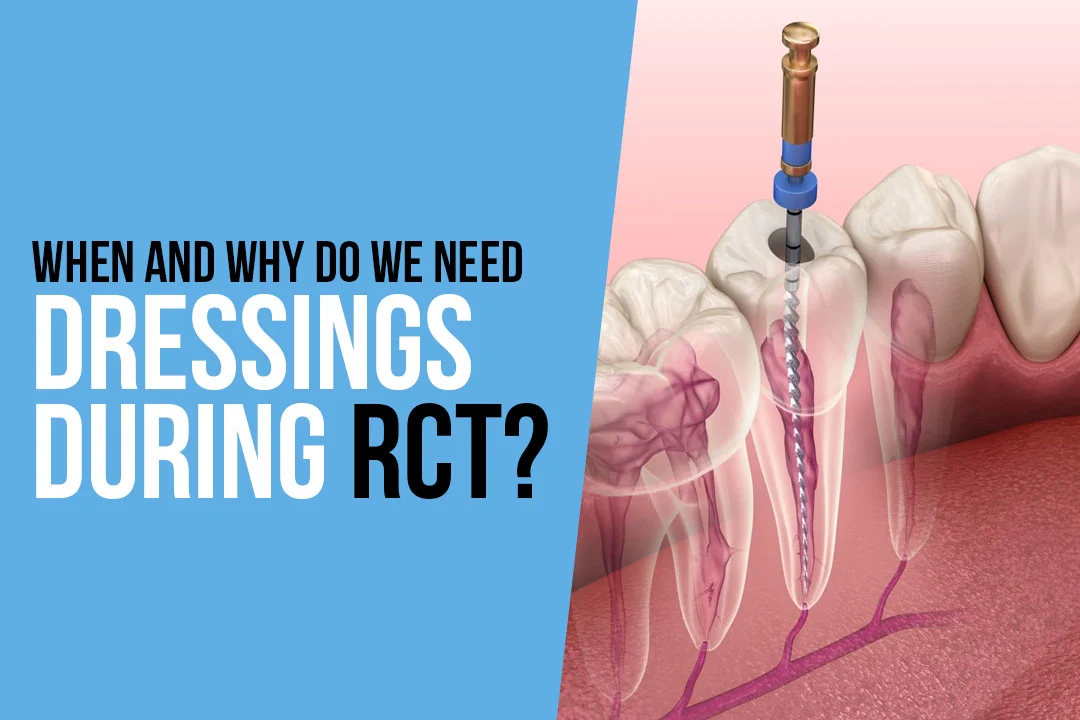When and Why Do We Need Dressings During RCT?
Root Canal Treatment (RCT) is a crucial dental procedure aimed at saving a tooth from extraction by treating infected or damaged pulp within the tooth. At Dr. Dipti’s Smile Suite, we excel in providing top-tier RCT services, ensuring optimal dental health for our patients. Here, we delve into the significance of dressings during RCT, explaining why they are essential for successful treatment.
Understanding Root Canal Treatment
Root Canal Treatment, often referred to as endodontic therapy, becomes necessary when a tooth’s pulp becomes infected or inflamed due to deep decay, repeated dental procedures on the tooth, or trauma. The procedure involves removing the infected pulp, cleaning and disinfecting the root canal, and then sealing it to prevent further infection.
Importance of Dressings in RCT
Dressings play a critical role in the success of RCT, particularly in cases where the tooth’s pulp is significantly infected or inflamed. Here’s why they are indispensable:
- Infection Control: Dressings, typically consisting of antibacterial materials, help control and eliminate infection within the root canal system before sealing.
- Promoting Healing: They facilitate the reduction of inflammation and promote healing of the surrounding tissues, ensuring a more comfortable recovery post-treatment.
- Temporary Seal: Dressings provide a temporary seal over the cleaned root canal space, preventing recontamination by oral bacteria until the final filling or crown is placed.
When Are Dressings Required?
Dressings are typically required during RCT in the following scenarios:
- Severe Infection: When the tooth pulp is severely infected, dressings help in reducing the bacterial load and creating a favorable environment for subsequent treatment.
- Multiple Visits: For cases requiring multiple visits for RCT, temporary dressings protect the tooth between appointments, maintaining its integrity and preventing reinfection.
Procedure of Dressing Placement
The process of placing dressings during RCT involves several meticulous steps:
- Pulp Removal: The infected pulp is carefully removed from the tooth’s root canal using specialized instruments, ensuring complete elimination of bacteria and debris.
- Cleaning and Shaping: The root canal is thoroughly cleaned and shaped to prepare it for the placement of dressings.
- Dressing Application: A medicated material, often with antibacterial properties, is placed into the cleaned root canal space to disinfect and promote healing.
- Temporary Seal: A temporary filling or sealant is placed over the dressing to protect the tooth until the next appointment or the final restoration phase.
Benefits of Proper Dressing Use
Proper use of dressings during RCT offers several benefits:
- Improved Success Rate: Effective disinfection and temporary sealing enhance the success rate of RCT, reducing the likelihood of treatment failure or complications.
- Patient Comfort: By reducing infection and inflammation, dressings contribute to a more comfortable experience for the patient during and after the procedure.
- Preservation of Tooth Structure: They help preserve the natural tooth structure by preventing further decay or damage, supporting long-term oral health.
Conclusion
In conclusion, dressings play a pivotal role in ensuring the success and efficacy of Root Canal Treatment in Faridabad. By controlling infection, promoting healing, and maintaining the integrity of the root canal space, dressings contribute significantly to the overall outcome of RCT. Patients undergoing RCT can rest assured that our expertise and dedication to using advanced techniques and materials will result in optimal dental health and a restored smile.
FAQ
- What is Root Canal Treatment (RCT)?
Root Canal Treatment is a dental procedure used to treat infected or damaged tooth pulp, aiming to save the tooth from extraction.
- Why might I need Root Canal Treatment?
RCT is necessary when the tooth’s pulp becomes infected or inflamed due to deep decay, trauma, or repeated dental procedures.
- How is Root Canal Treatment performed?
During RCT, the infected pulp is removed, the root canal is cleaned and shaped, and then sealed to prevent further infection.
- Does Root Canal Treatment Hurt?
Modern techniques and anesthesia ensure that RCT is typically no more uncomfortable than getting a dental filling.
- How long does Root Canal Treatment take?
The duration varies depending on the tooth’s complexity and the severity of the infection, typically requiring one to three visits.
- What are the signs that I might need Root Canal Treatment?
Symptoms include severe toothache, sensitivity to hot or cold, swelling, and tenderness in the gums.
- Are there alternatives to Root Canal Treatment?
Alternatives include tooth extraction followed by replacement options like implants or bridges, but preserving the natural tooth is ideal.
- Can a tooth with Root Canal Treatment last a lifetime?
With proper care, including regular dental visits and good oral hygiene, a tooth treated with RCT can last a lifetime.
- Is Root Canal Treatment Safe?
Yes, RCT is a safe and routine procedure performed by qualified dentists using advanced techniques and materials.
- How much does Root Canal Treatment cost?
Costs vary based on factors like the tooth’s location and complexity of treatment. Dental insurance often covers a portion of RCT expenses.
